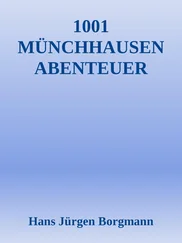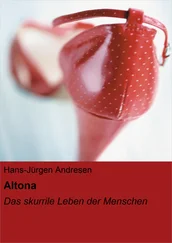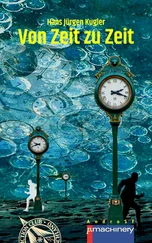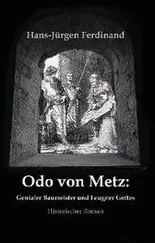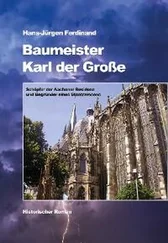In view of the subjective nature of pain and variables accompanying pain, which can be described by sufferers verbally and/or in writing mainly with questionnaires, some therapists occasionally assume that patients’ descriptions are “soft” data. In terms of their quality and significance, these are seen as less valuable than “hard” data obtained from clinical, imaging, and instrumental investigations. However, this view is mistaken because the opposite is often the case: Ideally, the investigations performed after the pain history has been taken merely serve to confirm or modify the diagnosis.
Clinical examination
Elements of the clinical examination include the following:
Measurement of the range of mandibular movement (condylar movement with simultaneous assessment of the presence of joint noises; maximum mouth opening; maximum laterotrusion and protrusion of the mandible). It is advisable to use a ruler marked in millimeters to numerically record the range of mandibular movement; the ruler must start immediately at one end with the 0-mm mark.
Palpation of the palpable muscles of mastication (temporalis, masseter) and the TMJs. Use of a pressure algometer enables clinicians to standardize this examination.
Occlusal examination. This particularly involves checking for the presence of occlusal contacts in maximum intercuspation and any changes to the dental hard tissues that have occurred (areas of attrition and abfraction) as evidence of teeth grinding or jaw thrusting.
The findings of the clinical examination are documented on a standardized record form.
Imaging
In principle, a dental panoramic radiograph, also known as an orthopantomogram (OPG or OPT), should be taken during the diagnosis of patients with symptoms of painful CMD. In view of the concerns patients frequently express over radiographic procedures, it is worth mentioning the favorable risk-benefit ratio given the relatively low radiation exposure of panoramic radiographs. The main purpose of a panoramic radiograph lies in differential diagnosis. Furthermore, it reveals gross morphologic changes in the TMJs, although these changes often have no pathologic significance. The radiographic findings generally play much less of a role than the results of the clinical examination when making the diagnosis and deciding whether CMD patients require treatment.
The use of advanced imaging—primarily cone beam computed tomography (CBCT) and magnetic resonance imaging (MRI)—following pain-focused history taking, clinical examination, and the availability of a recent panoramic radiograph—is reserved for cases in which the anticipated findings of further imaging techniques are likely to have a clear relevance in terms of clarifying the diagnosis and the resulting treatment or prognosis. Such relevance exists if the individual’s signs and symptoms or the examination findings cause the clinician to consider in differential diagnostic terms (for the purpose of exclusion or differentiation) diagnoses that may have specific and, in some cases, irreversible therapeutic consequences. Relevance can also apply if the signs and symptoms or the examination findings cannot be satisfactorily influenced despite the initiation of conservative, reversible therapeutic measures. By contrast, clear relevance does not exist if the findings from the advanced imaging would have no implications for the diagnosis being made and the treatment being adopted but are only being gathered together with other data in the sense of “bulk screening.”
Treatment
A number of treatment methods are available for patients with the different facets of painful CMD. However, the level of evidence is not high for all of these methods. In this age of evidence-based medicine, unchecked personal experience and advice from recognized authorities that is given without proof is no longer sufficient for patient-centered decision making. Instead, evidence of the benefit of prospective intervention(s) is required. The evidence largely comes from results and findings gained from clinical trials and published in specialist journals.
Modern treatment of painful CMDis characterized by an interdisciplinary and multimodal approach, which is always guided by the severity of the symptoms in the individual patient. For instance, a clear distinction must be made between acute, acute persistent, and chronic pains. Painful CMD is a regional variant of musculoskeletal discomfort that can be found in other parts of the body. Contemporary diagnostics and treatment of painful CMD are therefore based on proven medical concepts.
Treatment recommendations from well-known professional associations suggest that reversible therapies are preferable to invasive interventions. 22 – 25 The risk-benefit ratio of the available treatment methods must always be considered.
Oral splints are the most commonly used method for CMD treatment in dentistry. Their pain-reducing effect is proven, irrespective of the design and material used. 26 The Michigan splint is regarded internationally as the gold standard because of its favorable risk-benefit ratio 27 ; it is also the most widely used type of splint worldwide. 28
Furthermore, there is a high level of external evidence for physiotherapy self-treatment 29 and drug therapy (eg, nonsteroidal anti-inflammatory drugs taken for a few days for TMJ pains; a few months’ administration of low-dose tricyclic antidepressants for persistent pains). 30 , 31 In addition, physical therapy and professional physiotherapy, 32 muscle-relaxing techniques (including biofeedback and behavioral therapy), 33 , 34 and acupuncture 35 , 36 are recommended, even though the degree of efficacy of these methods has been only partly qualified in recent studies. 37 , 38 The listed treatment methods should not be selected based on an either/or decision but should be used in a multimodal way depending on the particular case, especially in complex cases. 39
Dentists who wish to care for the whole range of patients with painful CMD would be wise to build up a network of colleagues from other professional spheres so that they can act skillfully and quickly when necessary. This includes:
Physiotherapy. It is important to ensure that the physiotherapist is very knowledgeable about treatment of the facial region.
Pain psychotherapy. Look online for certified therapists in your local area who offer specialized pain psychotherapy.
Moreover, making contact with the patient’s family doctor before treatment is strongly recommended, especially in cases that have become chronic. Other disciplines, such as orthopedics; rheumatology; pain medicine; neurology; or ear, nose, and throat (ENT) medicine, should also be involved in the treatment when necessary.
References
1.Hugger A, Lange M, Schindler HJ, Türp JC. Begriffsbestimmungen. Funktionsstörung, dysfunktion, kraniomandibuläre dysfunktion (CMD), myoarthropathie des kausystems (MAP). Dtsch Zahnarztl Z 2016;71:165.
2.Schulte W. The functional treatment of the myo-arthropathies of the masticatory apparatus: A diagnostic and physio-therapeutic program [in German]. Dtsch Zahnarztl Z 1970;25:422–449.
3.Sessle BJ. The neural basis of temporomandibular joint and masticatory muscle pain. J Orofac Pain 1999;13:238–245.
4.Palla S. Myoarthropathien des kausystems. In: Palla S (ed). Myoarthropathien des Kausystems und Orofaziale Schmerzen. Zürich: Department of Prosthodontics and Total Prosthetics, Center for Oral and Maxillofacial Surgery, University of Zurich, 1998:3–16.
5.Simons DG. Clinical and etiological update of myofascial pain from trigger points. J Musculoskelet Pain 1996;4:93–121.
6.Fridén J, Seger J, Sjöström M, Ekblom B. Adaptive response in human skeletal muscle subjected to prolonged eccentric training. Int J Sports Med 1983;4:177–183.
Читать дальше


